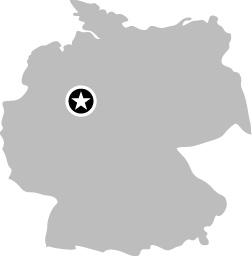021
Röntgen Museum, Remscheid, Germany
 51° 11′ 37.90″ N, 7° 15′ 33.79″ E
51° 11′ 37.90″ N, 7° 15′ 33.79″ E
![]()
The Discovery of the X-Ray
In 1895, Wilhelm Conrad Röntgen discovered a type of radiation known today as X-rays. Six years later, his discovery earned him the first Nobel Prize in Physics, in part because of the almost immediate adoption of X-rays in medicine. Within two months of his discovery, Röntgen presented a paper entitled “On a New Kind of Rays,” in which he detailed his breakthrough and speculated that these new rays were perhaps similar in composition to light.
Röntgen used a sheet of paper coated with barium platinocyanide to detect X-rays. Under the influence of radiation, barium platinocyanide fluoresces; it had been used by others, such as the Curies (see Chapter 15), to detect the presence of radiation from radioactive substances. Röntgen discovered that a sheet of barium platinocyanide–coated paper would fluoresce even when it was meters from the X-ray source.
His X-ray source was a vacuum tube called a Crookes Tube, which had been invented by the British physicist William Crookes 20 years earlier. Crookes had used the tube (which consisted of an evacuated glass tube containing a pair of metal electrodes) to discover “cathode rays” (which we now call electrons), because the accelerated electrons ...

